Soviet "whales" Claude Dornier. Part II
To monitor the construction of the Valley, a commission was sent to Italy under the supervision of engineer Weizer. The production of the top ten "Valley" began in the fall of the year 1927. The schedule for the construction of boats by the Italians was not fulfilled: by November, the assembly of the first aircraft lagged more than 20 days.
It was only in the spring of 1928 that control tests of flying boats of the first batch began. By April 10, the plant transferred all ten Valya for acceptance, but 6 of them did not have screws, as they did not have time to come from Germany.
Engineer Weizser reported from Italy: "The impression of flight characteristics is disgusting." It was caused by overweight aircraft. There were other serious complaints: the performance of the lower radiators was less demanding, and the rear engines overheated, the piston rings of the engines collapsed, the turrets turned out to be old and rusty. Only on one "Vala" No. XXUMX, Soviet receivers revealed fifty different defects. But the company was able to quickly eliminate the most significant shortcomings, and April 95 seaplane No.19 was shipped to the Soviet Union. At the beginning of May, the number XXNX overtook them. Four Valya left aboard the Tomsk steamship, which was released from Genoa on May 95.
On August 7, the Valey 11 was listed as part of the Black Sea Air Force (in the USSR, the Far East was usually designated as DV). By August 16 took almost the entire second batch, the last car from it was shipped 28 September.
All airplanes were assembled according to one standard, although initially it was planned to deliver not 9 by X, but 12 tanks with an almost double fuel reserve and use them as tankers for refueling at the advanced bases.
The first new "Vali" received 60-I squadron. Bartini Squadron Engineer officially accepted them on June 19. The seaplanes did not yet have machine guns, radio stations, fire extinguishers. The assembly of airplanes arrived in boxes (it was carried out with the help of German mechanics). By January, 1929 had already mastered the technique so much that they decided to carry out full tests of several machines. The results were considered satisfactory: the maximum speed - up to 197 km / h, which was even higher than the requirements of the task - 195 km / h).
But some of the requirements of the technical specifications were not met - the ceiling was less, and the landing speed - more than stated. The requirement clearly specified in the contract was not ensured, ensuring the interchangeability of large nodes. Not fully completed the factory test program. As a result, the Dornier Metalbauten company was forced to pay a penalty to our country. She bought an additional number of parts.
Of the 20 “Vale” of the second order in the Black Sea navy left 19. One plane of the People’s Commissariat for Military Commodities lost to the Komserverput trust, the predecessor of the GUSMP. The assembly of flying boats was completed in September 1929. Last, they assembled three cars, the planes of which were drowned during unloading in Odessa. New ones were brought only in May.
"Valyami" fully staffed 60 th squadron and a new 63 th, formed on the basis of the 53 squad. The personnel of the latter began to retrain even before the distillation of two cars with Lorrains to the Baltic. Each squadron got eight Valya. One car was listed as the Black Sea Air Forces, and it was used as a headquarters and transport vehicle.
Combat aircraft were used as long-range reconnaissance aircraft and bombers. Initially, the maximum payload specified in 2600 kg was not the limit for Valya - it could be lifted to 3000 kg, which was an excellent indicator for that time, only the take-off was lengthened. Overloaded "Val" until the moment of separation ran about two kilometers.
Reliable nautical "Vali" with spacious cabins clearly became a big step forward compared to the old Yu-20 and C-16bis. Range "Valley" in the version of the scout covered the entire Black Sea and allowed to keep under control the actions of all potential opponents.
However, during the operation revealed a number of shortcomings. At first, the lack of strength of the DMV screws strongly pestered me. The rear screws suffered especially, their life did not exceed 38 hours. For three months, the 1928 year of operation on the Black Sea had to replace the 9 screws. Assessing the validity of the claims, the Germans offered free 20 new propellers with a reinforced sleeve. In addition, the rudder drive cables were often frayed (the rollers were too small in diameter), the windmills of the dynamo were broken, and the pneumatic system pipes burst.
The installation of the radio station was unsuccessful: it was inconvenient to maintain and even harder to repair. The stoppers of rifle turrets were weak. The suspension of bombs on the gill bomb racks was carried out with great difficulty, with excitement this procedure turned out to be generally impossible. However, it should be noted that all these shortcomings were not of a decisive nature and were removable.
The pilots also noted good handling on the water, ease of flying on one motor. But in piloting "Valya" there were also unpleasant moments. The Soviet instructions said: "The plane is unstable in the longitudinal ratio and requires the pilot to pay great attention to maintain the speed of the rudder. It has a tendency to play in small and dive under heavy loads."
The main advantage of "Valya" remained amazing vitality. In February, 1934 was tested with a new fuse AGM-2, one of them exploded in flight on one of the rear fuselage bomb racks. The car was riddled with splinters, the gunner was seriously injured and died in flight. But "Val" continued to fly. When the pilot MD. Nizhegorodtsev sat in the holes rapidly gushing water. But the pilot found a way out - at high speed, not slowing down the gas, he jumped ashore. The car then counted 600 holes. For saving the plane, Nizhegorodtsev was awarded the Order of Lenin.
In general, "Val" by the mid-thirties had already become obsolete. In the role of a sea bomber, he was “attacked on the heels” of domestic float-mounted TB-1P (TB-1a), which were also equipped with nodes for the suspension of torpedoes and mines. DV could not carry them, as well as some modern types of bombs, in particular, armor-piercing. And in general, the maximum caliber in 250 kg already looked insufficient for the destruction of large warships. I went to the series and the domestic long-range reconnaissance P-6, which had a float version of the P-ba.
This caused a decline in interest in the USSR for the further purchase of Valya. In the summer of 1930, the CIA received an offer from CASA to supply Valey with Spanish production, while the Spanish price was a third lower than that of Italian cars. Management refused.
Nor did Dornier offer any interest in supplying a larger, four-engine, flying Superboat. In the procurement plan for 1928-29, the year was one “Val”, intended to replace the transferred “Comseverput”. He wanted to equip more powerful engines VMW VIE7.3, because low thrust-to-weight ratio was one of the “sick” places of this aircraft. On this allocated 128400 rubles. But instead of it, at the insistence of Baranov, the UVVS bought a sample of the Italian hydroplane Savoy S-62bis (C-62B).
The C-62B was a little inferior to the “Valya” in flight range and had the best altitude-speed characteristics, but most importantly, it was significantly cheaper, although it was inferior in reliability and seaworthiness. And in the 1930-1931 years in the USSR, they counted on the commencement of mass production of domestic seaplanes ROM and Tom.
Well, while waiting for new cars in the Soviet Union, they began to upgrade Valey. Back in 1930, domestic 13-С radio stations began to be installed on these cars. The old imported AD-6Fs were so unreliable that they had to be taken off the aircraft in order not to carry useless cargo. In December of the same year, at the Sevastopol plant No. XXUMX, they improved the armament of one of the seaplanes. Instead of the original turrets of Italian production, the Soviet Tur-45 and Tur-5 were installed, each of which was equipped with a pair of YA machine guns (the Lewis were previously mounted).
Instead of the fuselage bomb racks Der-Zbis (front pair) and Der-4 (rear pair), four Der-6bis were installed, each of which could have a pair of bombs weighing from 24 kg to 82 kg. Germanic gill bomb racks changed the more advanced Soviet Der-13, which could carry FAB-250, and BRAB-250 without alteration. The SBR-7 bomb dumper was changed to a new SBR-9.
The car was tested by a branch of the Institute of Air Force and approved. The factory was instructed to refine all the "Wali" of the drill units according to this model. This work began in February 1931, and was completed in 1932.
A number of sources claim that the plant number XXUMX organized not only repairs and upgrades, but also the construction of new Valei. It is quite possible. It was there that the equipment was transferred to the Italian aircraft workshop, brought with the second batch of aircraft. Subsequently, it significantly replenished, constantly increasing the complexity of the work. Some orders were transferred to other enterprises.
When the plant number XXUMM tried to turn into aircraft building, he, taking into account the experience of working with metal aircraft, issued an order for the production of flying boats MTB-45.
However, under this plan, the plant had neither accessories nor components. The company’s management began to request Glavaviaprom to cancel the order. In May 1932 of the year, the UVVS received a letter in which it was stated: "The plant MTB-45 assigned to the plant No. XXUMX ... was not mastered in production by the enterprise and, moreover, was not provided with the necessary areas ... replacing the MTB-1 1 th copies of the plane DV ".
It is known that the license "Dornier metalbauten" was not sold in our country, but this does not mean anything, because such trifles as the patent law in the USSR in the 30-s did not attach much importance, copying everything that was possible to make independently.
The documents say that in the 1932-33 years of the Black Sea Fleet Air Force received "Wali" from the plant number XXUMX. But it is impossible to say with confidence that these were new boats or those undergoing major repairs and upgrades. In the majority of sources, it is stated that in our country six “Vali” with M-45B engines, which were licensed VMW VIE17, are manufactured.
In April, the first serial C-1932B were delivered from Italy by 62. In the fall, a copy of the same machine under the name of the MBR-4 began to make the plant number 31. These seaplanes entered service with squadrons and close-range intelligence units, and later into other units.
In 1935, in Taganrog, mass production of fully domestic MBR-2 seaplanes was launched, which soon displaced both the Far East and MBR-4. By the end of 1936, not a single Valya was left in the ranks of the Red Army air force.
Still capable of flying cars hit the polar Aviation. But in the Arctic, the Soviet “Vali” began to fly much earlier. In 1928, the expedition G.D. Krasinsky tried to make a flight from Vladivostok to Leningrad, along the route of the Northern Sea Route. For her, in Italy they purchased the Val, the same type as the second-order military vehicles, but without weapons. July 16, 1928, this flying boat, called the "Soviet North" flew from Vladivostok and headed north. But on August 22, the plane, which made an intermediate landing, was damaged by storm waves. From a route of 14000 km, only 6000 km were covered. The seaplane crew was not injured and returned to Vladivostok by sea on a ship.
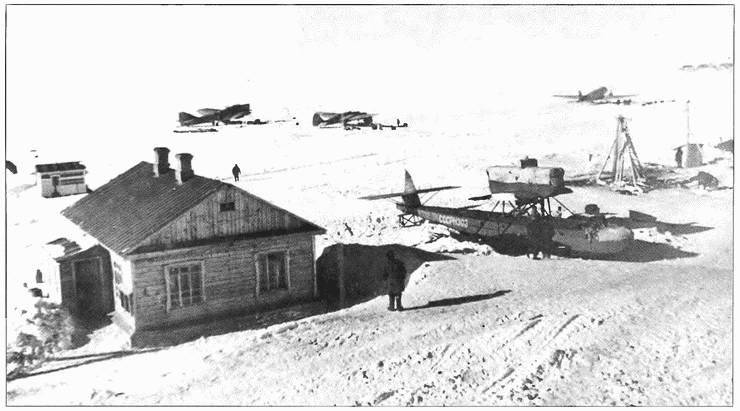
In the spring of 1929, the Komseverput trust, an exporter of forests from the north of Siberia, expressed interest in the possibility of using flying boats to conduct ice reconnaissance on the routes of ship caravans in the Arctic. By personal order of the People's Commissar Voroshilov, the trust was handed over one of the planes from the Black Sea. Hydroplane called "Comseverput". The plane from Sevastopol was overtaken to Novaya Zemlya and began ice reconnaissance in the Kara Sea. Val assisted the Krasin icebreaker to escort ships to the Ob Bay. During one of the reconnaissance flights to Dickson, "Val" made an emergency landing on the high seas. The plane picked up the passing timber and delivered to Dickson.
By the spring of next year, Comseverput had ordered a couple of flying boats in Italy, taking into account the first operating experience. Although the military version with the VMW VI engines was again taken as a basis, they removed the turrets from the aircraft, sewed the rear hatch, strengthened the set and thickened the trim in the lower part of the boat. The hatch in the front compartment was retained, but it was equipped with a semicircular visor from the wind. The vehicles provided for emergency discharge of fuel into the air. The power of the radio station is now done not from chickenpox, but from the compressor drive. The order was fulfilled by the Piaggio plant in Finale Ligure, which was then part of the CAMSA association, born on the basis of the former Dornier branch. He built civilian modifications "Valey".
Meanwhile, the old "Komseverput" (now "Komseverput-1") participated in the photographic survey of Angarstroi, surveyed the zone of the fall of the Tunguska meteorite, and by autumn it flew to New Earth. Three ice reconnaissance aircraft for navigating 1930 of the year managed to carry out 46 ships in the Kara Sea.
All three “Valya” “Komseverputi” worked together in 1931-32 together. They now carried the H1, H2, and NC. Usually the ice reconnaissance flight lasted 4-6 hours. The pilots carried the watch alternately - by the hour. Another at this moment in good weather, slept, his head thrown back on the gargrot. Letnab was asleep, curled up in his cabin, a mechanic on the tanks. The latter, if necessary, was awakened by the performance of a "hill".
"Val" Н1 participated in the expedition of S.V. Obrucheva. This year was the last for the old car - it was written off. In September, 1932, when returning from the Kara Sea's ice reconnaissance, the NZ plane got into aerial disturbance, "pecked" with its nose, hit the water at a speed of about 100 km / h and sank, falling apart. A motor vehicle with a mechanic inside was thrown forward, and a wing covered the cab. The commander of the Porzel aircraft, the co-pilot Dapfons and Letnab Brooks died. The rest managed to swim to shore; on foot they came to the weather station Matochkin Shar.
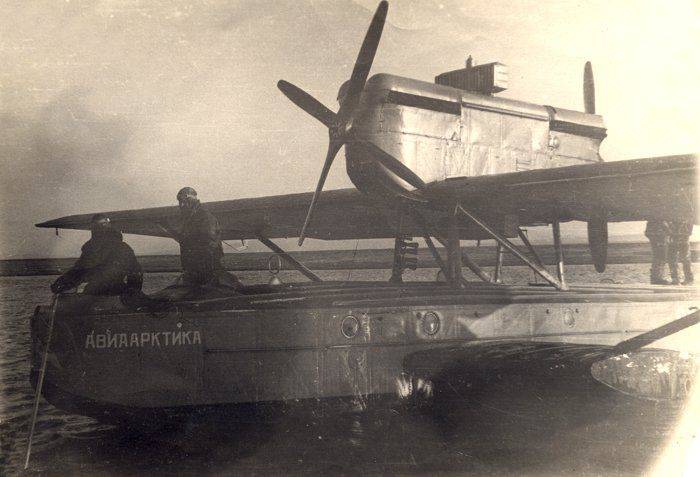
Н2 in the fall of 1932 was overtaken for overhaul in Sevastopol. But in the summer of 1933, “Valei” again became three in the Glavsevmorput (GUSMP) Air Service Directorate (GUSMP) again - HNNUMX and NU from the Air Force were added. On H8 S.A. Levanevsky made the flight Sevastopol-Khabarovsk, and then headed to Anadyr to rescue the American pilot D. Mattern, who crashed there. Mattern found and taken to Nome, Alaska.
In the middle of 30-s "Valley" in the polar aviation has become even more. He became the main type of seaplane in the north. A durable metal boat behaved perfectly in broken ice, shuga, which wooden MBR-2 and MBR-4 were afraid of. "Val" could sit on the snow and ice without skis - right on the bottom, reinforced with wooden bars.
Slow, but reliable "Vali" at times showed simply miracles. In the autumn of 1933, the pilot Ryabenko, spent almost all of his combustible in a long flight, boarded the H10 in Gydayamsky Bay. The boat froze into the ice, then it was cut down and dragged ashore. There she lay until the middle of August 1934, when the ice finally broke. “Val” was launched into the water, and further, by water, he reached the trading post Gyda-Yamo. Having filled gasoline, "Val" flew over to the base. HNNUMX then flew for a long time. In the fall of 10, there was a fire on it - a mechanic threw a match into a water tank, on the surface of which there was a film of gasoline. The percale completely burned down, but the aircraft's skeleton was sent for restoration to Krasnoyarsk.
Enviable longevity demonstrated H2. In 1936, the famous polar pilot VS Molokov flew a 26000 km flight on it. He began his journey in Krasnoyarsk, then flew to Ust-Kut - Yakutsk - Nogayevo - Petropavlovsk-Kamchatsky. I visited Commander and Anadyr, Wrangel Island and Rogers Bay (and conducted ice reconnaissance on the way), on Vaigach Island, and then flew through Arkhangelsk to Moscow. The 2 was operated until August 1937, until it was crushed at the Krasin icebreaker, on which it was then based.
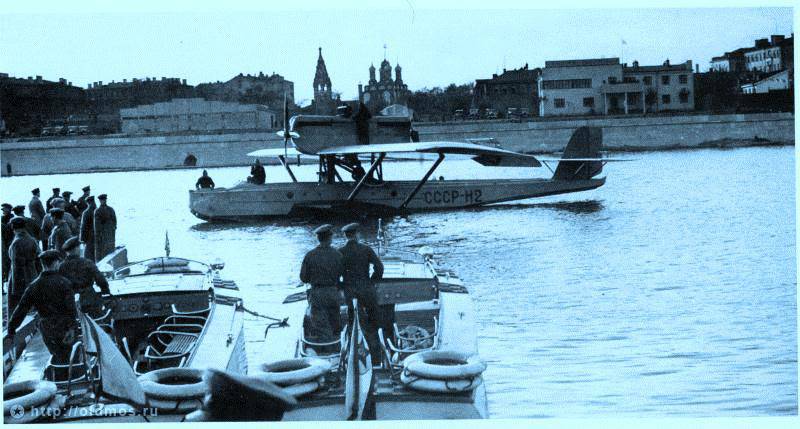
In the summer of 1940, H235, under the control of M.N. Kaminsky was forced to sit in the tundra, as he could not reach the water surface. After the necessary repairs I.P. Mazuruk raised the "Val" into the air, driving it along an oiled wooden platform. He drove the flying boat to the lake, from where all those involved in the rescue of the plane flew home.
Although Val began hopelessly outdated by the early forties, it continued to be an important part of our polar aviation. Before the war, polar explorers received a GTS flying boat, built under an American license, but their production was quickly curtailed, and most of the manufactured aircraft were handed over to the Navy. Replacing "Valya" she did not fully become.
In the summer of 1941, about a dozen of Far East remained in use. After the outbreak of war, the air groups assigned to fleets and fronts for auxiliary purposes were formed from the structure of the Civil Air Fleet. One of these groups, 2-I special, August 1 was created in the Northern Fleet. It was headed by Colonel Mazuruk. The material part consisted of airplanes, mainly obtained from polar aviation. Initially, there were two Valya in this group, and in September their number doubled. Flying boats armed with two turrets with ShKAS machine guns.
"Vali" flew on ice reconnaissance, delivered cargo, conducted anti-submarine patrols. The Dornier boats were used in the Northern Fleet before the start of the 1942.
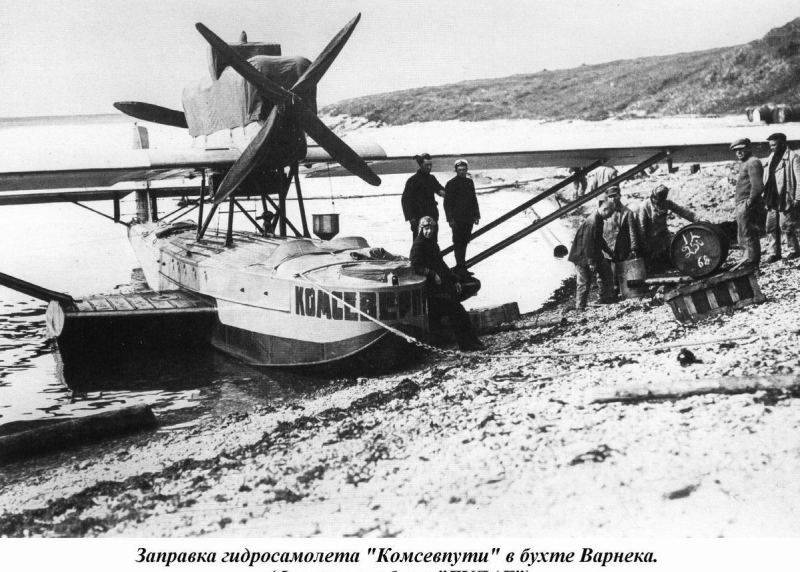
In November, in the Pacific Fleet, the 1941 was formed by the 132-th mixed squadron. It consists of four "Valya" from the polar aviation, as well as three ICBM-2 from the aviation of the NKVD and three SB from the Air Force of the Pacific Fleet. "Wali" were used as transport aircraft and long-range intelligence. It was not known when they were finally written off, but these flying boats no longer used Polar Aviation in 1942 navigation of the year.
Sources:
Kotelnikov V. Flying boat Dornier "Val". SPb .: Gangut, 1995. C. 12-31.
Farina N. The flying boat "Whale" // Model-designer. 1999. No.2. C. 32-36.
Kotelnikov V. Slow, but Reliable // Wings of the Motherland. 1997. No.8. C. 12-14.
Sobolev, D., Khazanov, D. stories domestic aviation. M .: Rusavia, 2000. C. 57-62.
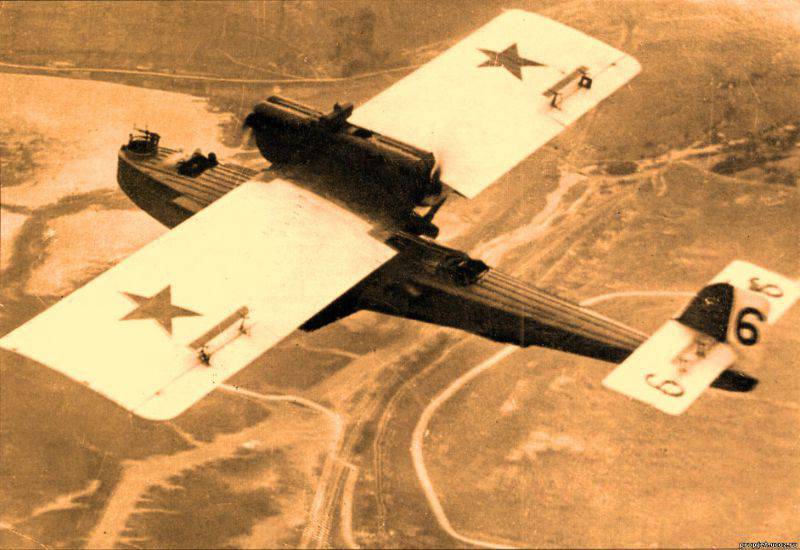
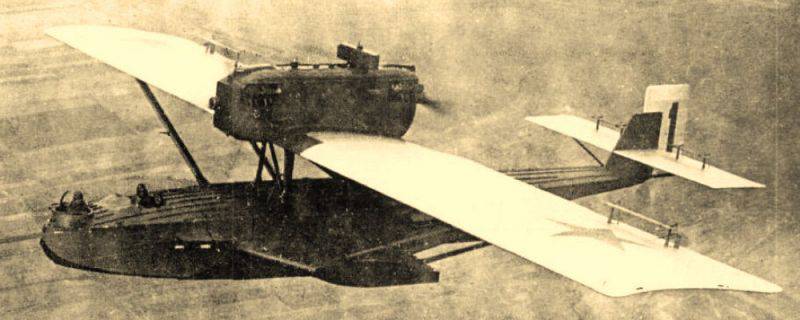
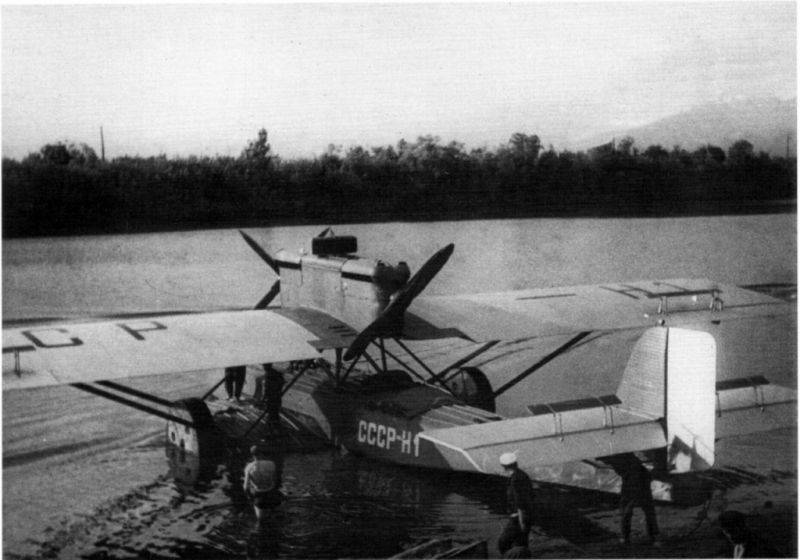
Information